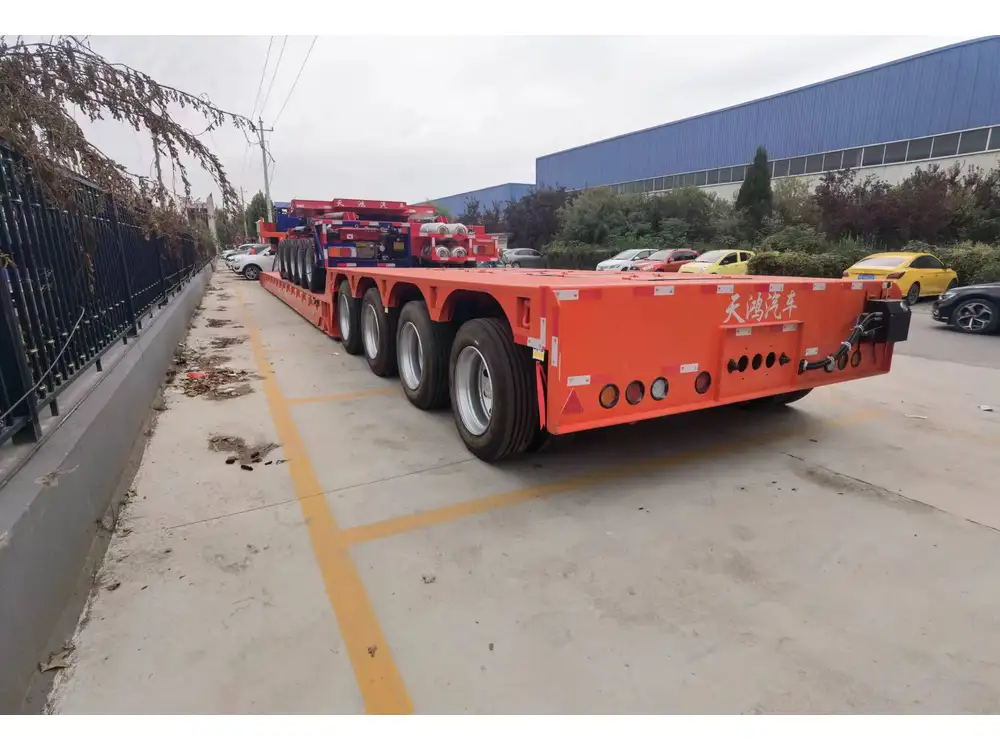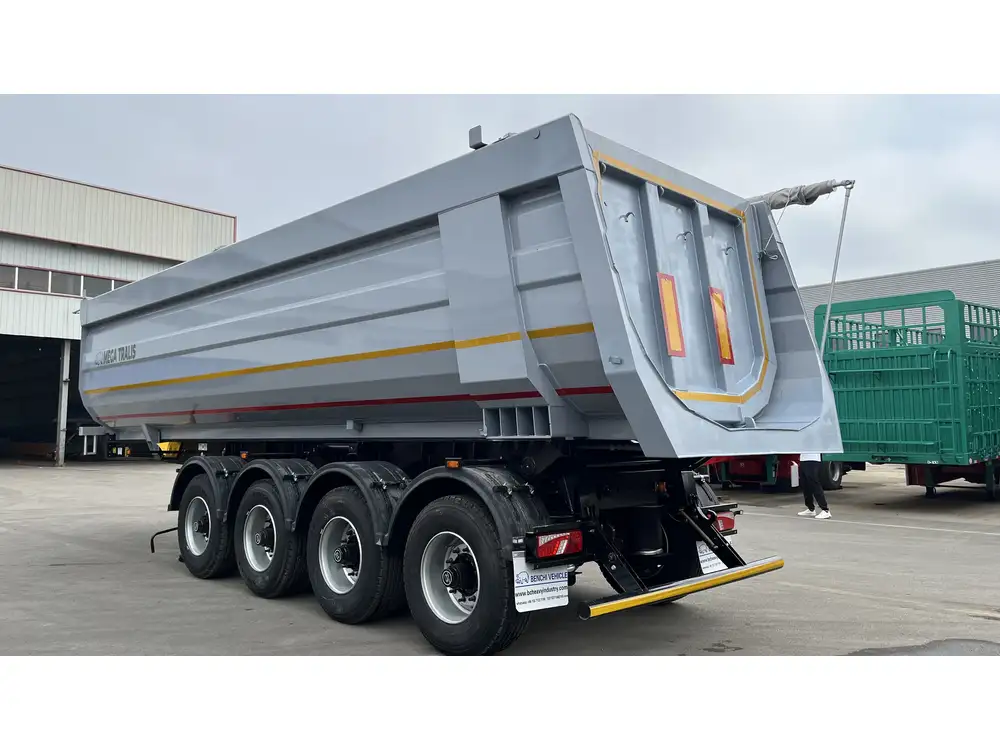Maintaining the integrity of a semi-trailer is paramount for its performance, longevity, and safety. Greasing is a critical aspect of upkeep that directly influences various trailer components, ensuring they’re well-lubricated and functioning correctly. In this guide, we will dissect the process and frequency of greasing a semi-trailer in a structured manner, addressing all relevant concerns and providing detailed information for optimal maintenance.
Understanding the Importance of Greasing a Semi-Trailer
Before delving into greasing frequencies, it is crucial to grasp why this practice is essential. Greasing a semi-trailer recommends several key benefits:
- Component Longevity: Regular lubrication helps prevent wear and tear, thus extending the lifespan of critical parts such as the axles, wheel bearings, and suspension systems.
- Safety Enhancement: Properly greased components function smoothly, reducing the likelihood of mechanical failures that could lead to accidents.
- Cost Efficiency: Neglecting routine lubrication can result in expensive repairs and downtime, costing owners much more in the long run than a regular greasing schedule.
Components That Require Greasing
Knowing which parts of a semi-trailer require attention can streamline the greasing process and ensure no component is overlooked. Here are the primary areas to focus on:
| Component | Purpose | Frequency |
|---|---|---|
| Wheel Bearings | Allow wheels to rotate smoothly | Every 10,000 miles |
| Kingpin | Connects the trailer to the tractor | Every 5,000 miles |
| Suspension Joints | Absorb shocks, ensuring smooth travel | Every 10,000 miles |
| Axle Seals | Protect the inner workings of axles | As needed, inspect every 5,000 miles |
| Fifth Wheel | Ensure reliable connection between tractor and trailer | Every 15,000 miles |
| Brake Components | Maximize brake effectiveness | As manufacturer advises |

Recommended Greasing Schedule
1. Daily Checks
Even when you may not be greasing every day, visual inspections should occur daily:
- Look for any signs of leaking grease.
- Check for rust or corrosion around greased components.
- Listen for unusual noises during operation which may suggest inadequate lubrication.
2. Every 5,000 Miles
- Kingpin: This area experiences significant stress and movement, necessitating regular lubrication to prevent wear.
- Inspect Axle Seals: A filthy or damaged seal can lead to compromised lubrication and must be checked frequently.

3. Every 10,000 Miles
- Wheel Bearings: They should be relubricated to ensure smooth rotation. A poorly lubricated bearing can generate excessive heat, leading to failure.
- Suspension Joints: Push grease into these pivotal areas to maintain peak operational performance.
4. Every 15,000 Miles
- Fifth Wheel: A well-greased fifth wheel reduces friction and wear, ensuring a robust connection between the tractor and trailer.
Greasing Procedures
Proper application of grease is almost as important as the grease itself. Here’s a detailed look at effective greasing techniques:

Step-by-Step Greasing Process
Gather Materials:
- High-quality grease appropriate for your semi-trailer.
- Grease gun.
- Cleaning cloths.
- Safety equipment (gloves, goggles).
Preparation:
- Park the trailer on a flat, stable surface.
- Engage the trailer brakes to prevent any movement.
Cleaning:
- Wipe down the area around each grease fitting with a cloth to remove dirt or old grease. This prevents contaminants from entering when you apply fresh grease.
Applying Grease:
- Attach the grease gun nozzle to the fitting.
- Apply grease until you see it exuding from the surrounding areas, indicating that the component is adequately filled.
- Be cautious not to overfill, which can damage seals.
Final Inspection:
- Post-greasing, inspect the component for any leaks or signs of wear. Ensure everything is functioning smoothly.
Choosing the Right Grease
Not all greases are created equal; selecting the correct type is pivotal. Consider the following types:
| Type of Grease | Characteristics | Best For |
|---|---|---|
| Lithium-based | Multi-purpose, water-resistant | Most standard applications |
| Calcium-based | Effective in wet conditions, retains shape | Marine environments or wet climates |
| Polyurea-based | Excellent thermal stability | High-temperature applications |
Signs That Indicate Insufficient Greasing
It’s imperative to recognize signs that suggest your semi-trailer components need greasing. Here’s what to look for:
- Excessive Noise: Grinding, squealing, or rattling noises can indicate that bearings or joints are poorly lubricated.
- Overheating Components: If components are running hotter than usual, they may lack sufficient grease.
- Excessive Wear: Check for unusual wear patterns on tires or suspension components, suggesting friction due to insufficient lubrication.

Environmental Considerations
Seasonal Impacts on Greasing Needs
- In colder temperatures, grease may thicken, requiring more frequent checks to ensure fluidity.
- In humid climates, greasing should be considered more frequently to prevent corrosion.
Grease Disposal
- Proper disposal of used grease is crucial. Follow local regulations regarding disposal and recycling.
Conclusion
Maintaining a rigorous greasing schedule for your semi-trailer not only enhances its performance but also safeguards your investment against potential pitfalls associated with neglect. By understanding the specific needs of various components and the overall importance of regular lubrication, operators can ensure their trailers endure the rigors of operation with grace.
Investing time and resources into proper maintenance will yield dividends in reliability, longevity, and safety for any semi-trailer owner. As you implement the strategies outlined, stay proactive in your maintenance routine and adjust your greasing frequency as conditions dictate.
By adhering to these guidelines and remaining vigilant in checking and executing the greasing of your semi-trailer, you are not only preserving your investment but also promoting a safe and efficient operation on the road.



